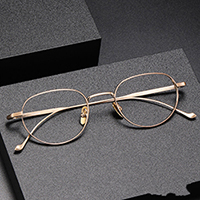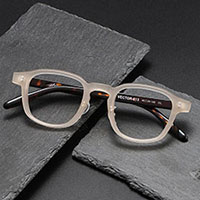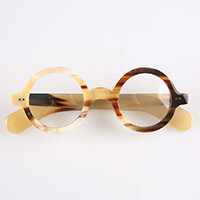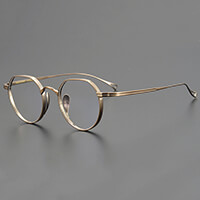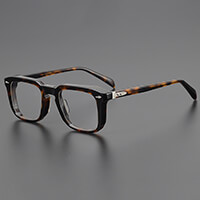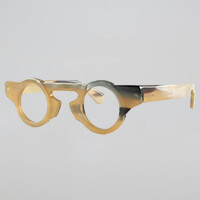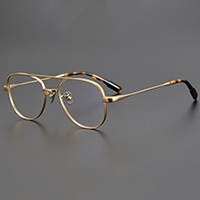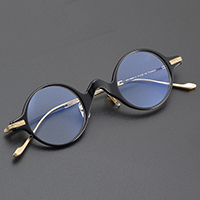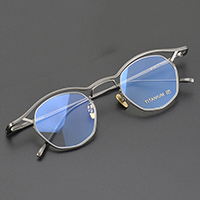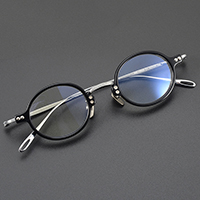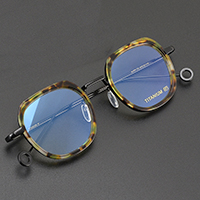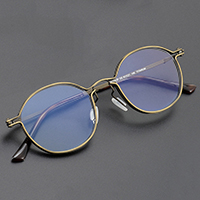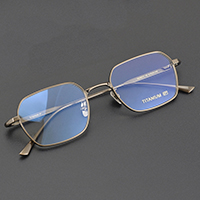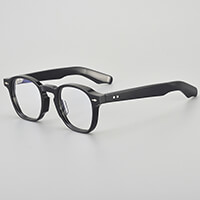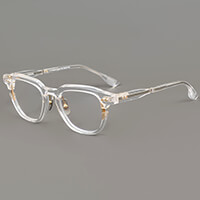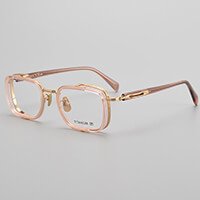
Understanding how to read glasses prescription is essential for optimal vision correction.
It’s common to feel overwhelmed when first looking at these documents, but rest assured, they’re designed with specific information for clarity and precision.
Each prescription consists of a series of standardized abbreviations and numerical values, such as OD, OS, SPH, and CYL, which dictate the specifics of your visual requirements, ensuring your lenses are perfectly tailored. Let’s break it down.
Key Abbreviations Explained
Abbreviations in
eyeglass prescriptions are essential for conveying precise information, usually in Latin terms. OD refers to "oculus dexter" (right eye), OS to "oculus sinister" (left eye), and OU to "oculus uterque" (both eyes). Accurate interpretation of these abbreviations ensures your lenses provide the correct visual correction.
OD, OS, OU: What They Mean
Eye prescriptions often include abbreviations like OD, OS, and OU, derived from Latin terms. These abbreviations are crucial for indicating which eye the prescription is for.
The abbreviation OD stands for "oculus dexter," referring to the right eye, while OS stands for "oculus sinister," indicating the left eye. OU, meaning "oculus uterque", denotes both eyes.
|
OD and OS labels are universally used in eye care, ensuring consistency in prescriptions.
|
|
Understanding these terms is essential for correctly interpreting your prescription. Knowing these abbreviations helps in ordering and fitting your eyeglasses with the precise optical power needed for each eye. Accurate prescription interpretation is vital for optimal vision correction and eye health.
NV and DV: Near and Distance Vision
NV and DV distinguish visual needs.
Near Vision (NV) refers to the visual acuity required for tasks such as reading or using a smartphone. This term signifies prescriptions intended to correct vision at close distances, typically where the most precise focus is necessary for tasks performed within arm's reach. Essentially, NV is key for activities where detailed visual clarity is essential at shorter ranges.
Distance Vision (DV) definition.
Distance Vision (DV), on the other hand, pertains to seeing objects clearly that are far away, such as road signs while driving or a movie screen. This category of prescription ensures that one can see distant objects crisply and without strain, which is crucial for everyday activities requiring clear long-range vision.
Many prescriptions cater to both - NV and DV needs. Prescriptions can incorporate multi-focal lenses or
progressive lenses, which accommodate both near and distance vision corrections seamlessly, providing a comprehensive visual aid for varying focal lengths.
Understanding NV and DV in your prescription enhances not only your awareness of your specific visual requirements but also aids in selecting the right eyewear. Combining both near and distance vision corrections can optimize your visual experience, ensuring clear and comfortable sight at every distance.
PD: Pupillary Distance
PD, or Pupillary Distance, measures the space between the centers of your pupils in millimeters. This is a crucial metric for ensuring your lenses align properly with your eyes.
Precise pupillary distance is essential for optimal visual clarity and comfort.
Typically measured during an eye exam by your optometrist, PD ensures your eyeglass lenses are centered correctly.
Improper PD measurement can result in eyestrain, headaches, or blurred vision, particularly in progressive and bifocal lenses.
For single-vision glasses, a slight deviation in PD might not be as problematic. Nevertheless, ensuring an accurate PD can significantly enhance your overall visual experience and comfort.
Therefore, always verify that your eye prescription includes your PD to achieve the best optical results. Properly aligned lenses contribute to reduced strain and improved vision quality.
Common Prescription Terms
Understanding your eye prescription involves familiarizing yourself with essential terminology like SPH (Sphere), CYL (Cylinder), and Axis. These terms specify the exact visual correction needed for your eyes, encompassing conditions such as myopia, hyperopia, and astigmatism. Knowing these terms is crucial, as they dictate the type and degree of lens adjustments required for optimal vision, ensuring your glasses meet your unique visual needs.
SPH: Spherical Correction
The term SPH or Sphere reflects the main aspect of your eye prescription related to spherical correction.
SPH measures the lens power needed to correct nearsightedness (myopia) or farsightedness (hyperopia). It is denoted in diopters, represented by a positive or negative number.
A negative SPH value signifies myopia, meaning you have difficulty seeing distant objects clearly. Conversely, a positive SPH value denotes hyperopia, indicating challenges with viewing close objects.
SPH alone suffices if your eyes have no astigmatism, simplifying your prescription. Most eyeglass wearers are familiar with this straightforward aspect of visual correction.
Accurate SPH correction is crucial for clear and comfortable vision, making lens adjustments essential based on this key measurement.
CYL and Axis: Astigmatism Details
The CYL (Cylinder) and Axis are essential components for correcting astigmatism in eyeglasses prescriptions. Astigmatism occurs when the cornea or lens has an irregular shape, causing blurred vision at all distances.
CYL measures the degree of astigmatism that needs correction.
Axis specifies the orientation of astigmatism correction on the cornea or lens. This measurement ranges between 1 and 180 degrees, indicating where the cylindrical power should be placed for optimal vision enhancement.
Understanding these values is vital for astigmatism management through glasses. An accurate prescription ensures that light entering your eyes is properly focused, significantly improving visual clarity. In practical terms, a precise CYL and Axis correction translates to a markedly better visual experience, reducing strain and discomfort.
Add and Prism: Additional Corrections
In some scenarios, standard lens prescriptions require extra adjustments to fully address your vision needs.
Add ("Addition") power is specified for people needing help with near vision, often due to presbyopia. It’s represented by a positive number on your prescription, indicating extra magnification for reading or close-up tasks.
Adding this bifocal or multifocal correction helps maintain clarity across different viewing distances. It’s especially common in progressive lenses, which transition smoothly between different strengths for near and distance vision.
Prism correction addresses alignment issues, such as double vision (diplopia). The prism value is typically written in prism diopters, accompanied by the direction of the base (BU, BD, BI, BO). This helps to properly align images from both eyes.
Together, these elements ensure your glasses provide comprehensive vision correction, enhancing both clarity and comfort.
Understanding Diopters
Diopters are the units that measure the refractive power of lenses. They describe how much correction your eyes need. Understanding these numbers helps in selecting optimal lenses, ensuring your vision aligns with your eyes' specific needs.
For example, a prescription with a "negative diopter" indicates nearsightedness. If your SPH value is -3.00, it means moderate myopia, requiring lenses that focus light more effectively for distant objects. Conversely, a positive diopter indicates farsightedness, with values like +2.50 denoting moderate hyperopia, requiring lenses to aid in seeing up-close objects clearly.
Positive vs. Negative Numbers
In an eyeglass prescription, SPH values are either positive or negative. These numbers signify the type of refractive error your eyes have and determine whether you need correction for nearsightedness or farsightedness.
Negative numbers (e.g., -2.00) are used for correcting myopia. This means you have difficulty seeing distant objects clearly.
Positive numbers (e.g., +2.50) indicate hyperopia. In this case, you struggle to see close objects clearly and require correction to enhance near vision.
Understanding the difference between positive and negative SPH values is crucial for selecting the right lenses. By knowing this, you can ensure your glasses effectively correct your vision, leading to an improved visual experience. Whether you have myopia or hyperopia, precise values help in crafting lenses tailored to your specific needs.
Interpreting Prescription Strength
Prescription strength is represented in diopters, measuring the lens's refractive power.
1. -3.00 or lower: Indicates mild to moderate nearsightedness (myopia).
2. -3.00 to -6.00: Represents high myopia.
3. +2.00 or higher: Indicates moderate farsightedness (hyperopia).
4. +2.00 to +6.00: Represents high hyperopia.
5. CYL value: Any cylindrical value pertains to astigmatism correction.
Nearsighted prescriptions use negative diopters, meaning you see better up close.
Farsighted prescriptions use positive diopters, aiding in better vision at a distance.

Importance of Regular Eye Exams
Regular eye exams are essential for maintaining eye health and vision quality. They help in early detection of eye conditions like glaucoma, cataracts, and macular degeneration, which could otherwise lead to vision loss if left untreated. Regular exams also ensure your prescription stays updated, providing you with the best possible vision correction.
Expiration Date of Prescriptions
Eye prescriptions typically have an expiration date.
1. Ensures regular eye health monitoring.
2. Reflects potential vision changes.
3. Standard validity: one to two years.
4. Required by most eyewear retailers.
5. Encourages timely eye exams.
Regular eye exams are crucial to maintain optimal vision health.
Always verify the expiration date on your prescription before purchasing new glasses. Staying current with your prescription ensures accurate and effective vision correction.
Keeping Your Vision Up-to-date
Regular eye exams are crucial for keeping your vision sharp and your prescription accurate.
1. Schedule yearly appointments to ensure your eyes are in optimal health.
2. Monitor changes in your vision and report them to your optometrist promptly.
3. Follow professional advice for eye care, including any recommended treatments or lifestyle changes.
4. Update your prescription whenever there are significant changes in your vision or eye health.
5. Use appropriate eyewear as recommended by your eye care professional to protect against harmful UV rays and
blue light.
Regular check-ups help detect any eye conditions early, preventing potential complications.
Maintaining an up-to-date prescription is vital for effective vision correction and comfort.
Invest in quality eyewear and follow prescribed guidelines to preserve your visual health.














